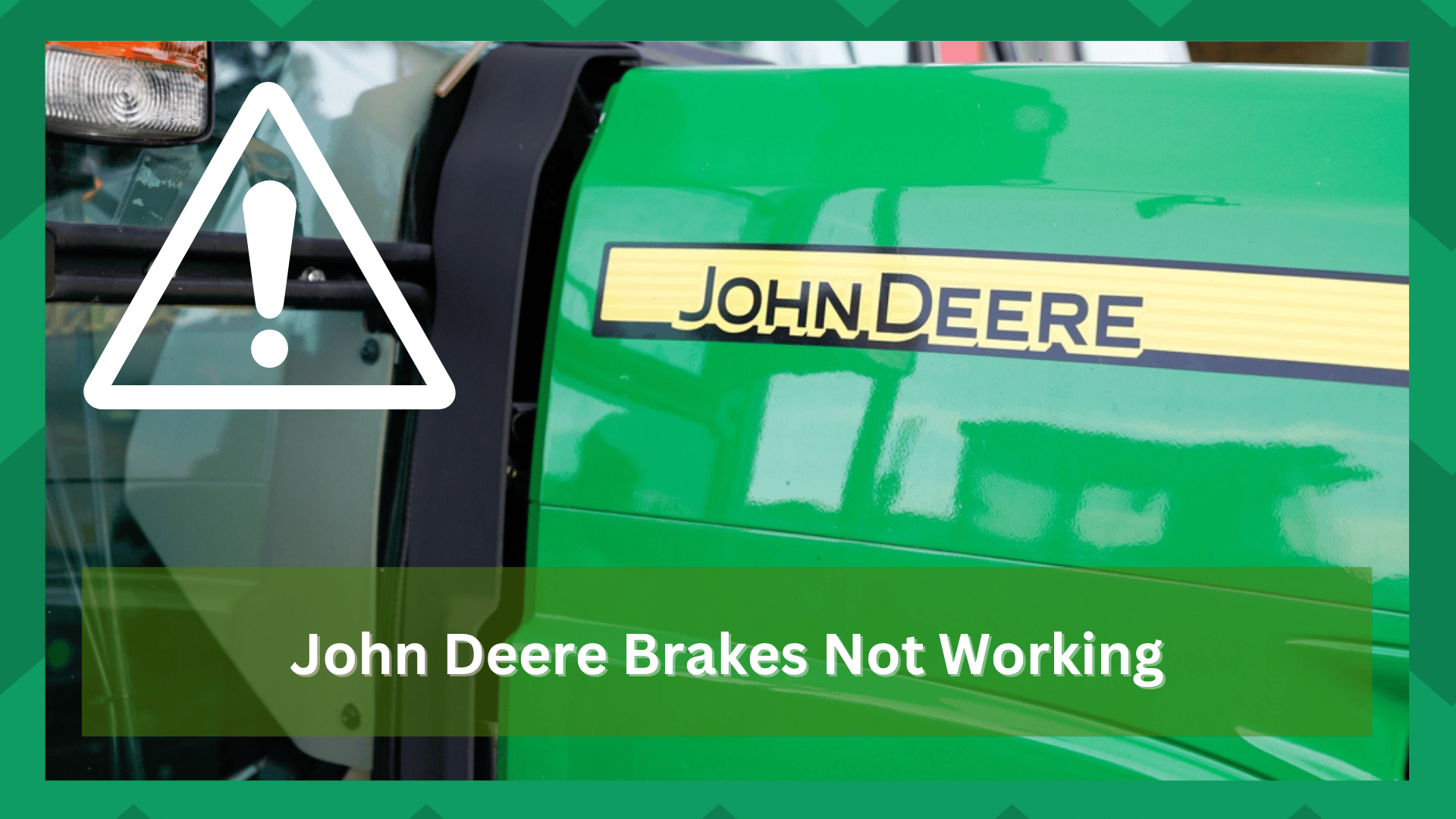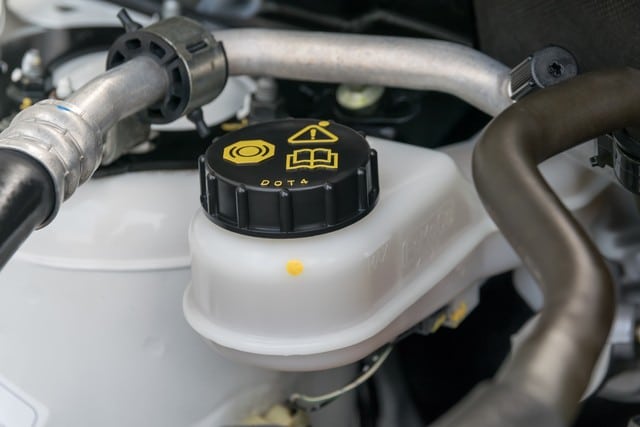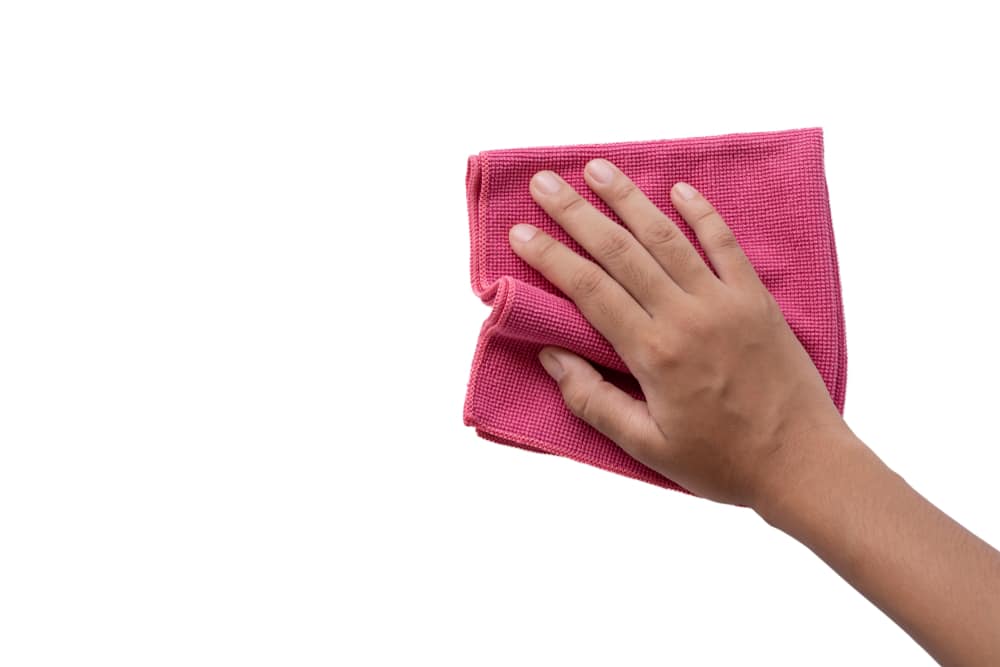
When purchasing heavy vehicles, John Deere is one of the finest options you can go for.
They offer various vehicles, ranging from tractors to skid steers. While mostly specializing in equipment used in construction and farming, you can get all sorts of products from them!
Even though the company is known to deliver quality, you can still run into issues while operating its equipment.
Likewise, we have heard from many users about John Deere brakes needing to be fixed. If you find yourself among these users, here is how you can fix it!
Fixing John Deere Brakes Not Working
- Rebuilding the Brake Valve
The brake valve is one of the most common reasons that lead to the John Deere brakes not working.
To put it more simply, there could be something wrong with the installation of the brake valve. In either case, we recommend pulling the valve off and rebuilding it.
First, you will need to remove the valve from its bracket. After that, you should inspect it for any signs of damage or dirt build-up. If you find any, clean it with a rag and the appropriate solvent.
Once the valve is clean, check if all seals are in place and undamaged. You may also want to replace the seals if they are damaged and need to make a proper seal. Then, you can put the valve back together and re-install it in its bracket.
DO make sure that you pay heed to each piston’s inlet and outlet valves. Also, look for the equalizing valve, which is most likely causing the whole problem.
- Replacing the Master Cylinder or Slave Cylinder
If your John Deere brakes are still not working, you may need to check the master or slave cylinders. The master cylinder is responsible for channeling brake fluid to the brakes and should be checked as a priority.
If it needs replacing, you should first disconnect the brake lines from it. Then, drain the old brake fluid and replace it with new fluid. Finally, re-install the master cylinder and reconnect all of the brake lines.
As for the slave cylinder, this should be checked as well. You may need to replace it if it is damaged or worn out due to age.
The process of replacing the slave cylinder is similar to that of replacing the master cylinder. Still, you will need an additional tool to disconnect and reconnect the brake lines.
- Checking the Brake Pads and Shoes
You should check your brake pads and shoes if the brakes still don’t work properly. If worn out or damaged, they won’t be able to provide enough grip when braking. In this case, you will need to replace them as soon as possible.
- Changing the Brake Pads
Like every other vehicle component, the brakes should be treated with care. Both extended or careless use can often ruin the brake pads or cause potential damage.
So, if you have noticed your brake pads do not work like they are supposed to, chances are that you have a fault with them. Luckily, you should be able to order a replacement part for the brake pads.
- Getting it Checked
If changing the brake pads didn’t help your case, then it is highly likely that there is a more technical problem causing the brakes to fail. In that scenario, it is much better if you get it checked instead.
With limited knowledge, there is little you can do alone. This is why we suggest you try calling someone in the same profession who should help you check it.
- Contacting Support
The last thing you can do is get in touch with the dealer or directly contact John Deere’s support. Either way, you should get a better idea of what could be the reason why your brakes are acting this way.
How to fix John Deere brakes not working?
To fix John Deere brakes not working, the following steps should be taken:
Step 1: Inspect Brake System Components
The first step is inspecting all brake system components and identifying potential issues. Inspect the brake linings and other related components for wear or damage.
Examine the calipers, master cylinder, brake lines, and hoses for signs of leaks or other damage. If there are any damaged components, they should be replaced with new ones.
Step 2: Adjust Brake Shoes
If the brake shoes are not adjusted properly, it can lead to a wide variety of problems, such as poor braking performance and even complete failure of the brakes. Adjusting the brake shoes requires specialized tools and should only be done by a qualified mechanic.
Step 3: Check Brake Fluid Level
Next, check the level of brake fluid in the system. If it is low, top it off according to the manufacturer’s instructions. Ensure that you use fresh, clean fluid compatible with the system.
Step 4: Bleed Brakes
In some cases, air can get trapped in the brake lines and prevent proper operation of the brakes. If this is suspected, bleeding the brakes will help to remove any residual air.
A novice should refrain from attempting this process since it requires specialized tools and system knowledge.
Step 5: Inspect Hydraulic System
Finally, inspect the hydraulic system to ensure it is operating properly. Check for any leaks or other damage signs that may compromise performance.
If any components need to be replaced due to wear or damage, replace them with new ones.
Following these steps, the issue with John Deere brakes not working should be resolved, and the braking system should be restored to normal operation.
It is advisable to have a qualified technician inspect and repair any issues when dealing with brake systems, as they can be dangerous if not properly maintained.
How to prevent John Deere breaks from getting damaged?
- Preventative Maintenance
Regular preventative maintenance is the most important step in protecting your John Deere break.
This includes checking fluid levels, inspecting all hoses and belts for signs of wear or damage, lubricating points that need attention, and cleaning the brake assembly.
These simple steps can help you maximize the life of your break and reduce the chances of failure.
- Visually Inspecting Parts
Another important step in protecting your John Deere breaks is to inspect all parts regularly visually.
Check for signs of wear, damage, or general deterioration that could lead to a breakdown. Look for cracks, missing bolts, and other defects that could indicate a problem.
It is also important to check for excessive rust or corrosion that could indicate the presence of water or other contaminants in the brake assembly.
- Proper Cleaning
Proper cleaning of your John Deere breaks is essential to keeping them in good working order. Use only clean, lint-free cloths and non-corrosive cleaning agents.
Remove dust, dirt, and debris from the broken assembly to help prevent corrosion or wear on parts.
Make sure to use soft cloths and mild detergents when cleaning, as harsh cleaners can damage your breaks.
- Check for Wear and Tear
John Deere breaks are designed for heavy-duty use, but they should be addressed. Regularly check for signs of wear or tear on all parts of your brake assembly.
Look for loose bolts, bent components, and other indications that the break is becoming less efficient.
If you notice any issues, it is important to take action quickly to avoid further damage.
- Regular Maintenance
Finally, it is important to perform regular maintenance on your John Deere breaks.
This includes lubricating the moving parts, tightening bolts and screws, checking fluid levels and filters, and inspecting all components for signs of wear or damage.
Performing regular maintenance can help you avoid costly repair bills in the future and keep your break operating efficiently.
By following these simple steps, you can help ensure your John Deere break maintains its high performance for longer.
By taking the time to perform preventative maintenance and visual inspections on your John Deere breaks, you can help keep them in top condition and maximize their useful life.
Regular cleaning and proper lubrication are important steps in protecting your break investment.
Regular maintenance on your John Deere brake assembly can help ensure it operates reliably and efficiently for many years.
Taking the time to care for and maintain your John Deere breaks properly can help keep them running at peak performance and reduce the risk of costly repairs in the future.
The Bottom Line:
In conclusion, performing preventative maintenance regularly and visual inspections on your John Deere breaks is important to keep them healthy and running at peak performance.
Proper cleaning, lubrication, and regular maintenance can help maximize the life of your brake assembly and reduce the cost of repairs in the future.
John Deere’s brakes are one of the most annoying issues you can run into. The good thing is that most of the time, the issue isn’t that big of a deal and should be easily fixed.




